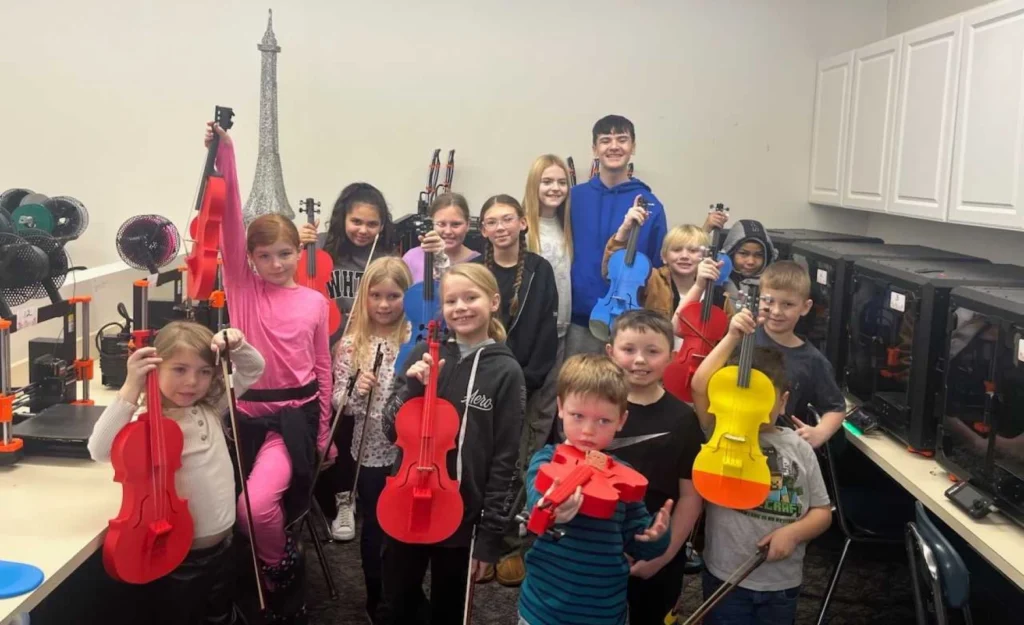In the California Area School District, educators are tapping into STEM skills to gain better access to art with new, 3D-printed violins.
Though they may not sound exactly like their wooden counterparts, the 3D-printed violins are just as loud while being both more durable and easy to tune — a great benefit for elementary learners, according to superintendent Laura Jacob, who spearheaded the initiative.
The associated costs of instrument rental and lesson fees often hinder the ability of students from lower socioeconomic backgrounds from exploring musical possibilities, Jacob said. A third of the district’s student body lives below the poverty level.
The 3D-printed violins cost roughly $50 to produce; however, grant funding is making instruments free for students.
“You know, if they break, it’s not a big deal. I can print the new part,” Jacob said. “And to me, getting kids’ hands-on instruments is what gets them engaged in music. And so the more instruments I can get in kids’ hands, the happier I am.”
Using the Hovalin acoustic violin template from Hova Labs, modified guitar pegs, real violin strings, a wooden violin bridge and a center rod, Jacob can produce a violin in three days, including printing time. All that’s left is choosing a color.
“Usually, you don’t get to pick the color of your violin, but if you’re lucky, you will. And then after you play violin for three years, then you get a wooden violin on your third year,” explained one fourth-grade student.
Students transition to playing on a wooden violin once they’ve demonstrated a mastery of four different scales and corresponding songs, according to Jacob.
Having transitioned to the traditional wooden violin, Jacob pointed out, one eighth-grader now participates in regional Scottish fiddling competitions. A fourth-grader, after expressing a deep interest, inspired Jacob to 3D-print a cello — though it looks more like an upside-down cross than its usual form. The two are now learning to play the instrument together.
“I want to make sure that we do whatever it takes to put instruments in kids’ hands. Whatever instrument they want, we want to put it in their hands,” Jacob said. “And this is one way to do it.”
